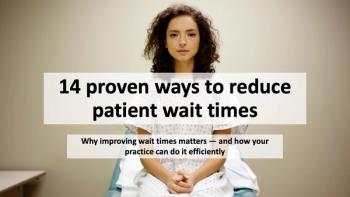
“Waiting out” COVID-19 is not a solution for outpatient care
While the healthcare sector’s initial call to postpone elective care procedures was understandable at the time, it was never meant to develop into a long-term policy.
Outpatient providers must make a concerted effort to inform patients that the instructions to avoid all “nonessential” healthcare procedures are no longer relevant.
Outpatient clinics have taken significant steps over the last six months to limit disease spread within their facilities and ensure that patients can safely seek in-person care. Now, patients have few reasons to delay crucial—if not immediately time-sensitive—procedures. However, convincing patients of that truth may prove difficult.
When the Centers for Medicare and Medicaid Services advised the postponement or cancellation of all non-emergency, in-person procedures in March,
This reasoning makes sense. However, the implication that it was no longer safe to seek inpatient care ultimately caused patients to flee outpatient and primary care centers in droves. In turn, this led to a massive drop in patient traffic and put many outpatient clinics at a real risk of going out of business.
According to data published by the Commonwealth Fund, visits to ambulatory care centers
Researchers for Strata Decision Health further note that some specialties have fared worse than others.
All of these drops indicate a pattern of widespread anxiety around seeking in-person care. In early August,
Given all of these findings, it seems likely that many patients will adopt a “wait and see” mentality and avoid care until COVID-19 is over. Unfortunately, the reality of the matter is that our current pandemic worries likely won’t resolve itself for at least another year—and the COVID-19 virus will probably be around for even longer.
“It is going to become part of our daily, or certainly seasonal, reality within the healthcare system and within the country,” Megan Ranney, an emergency physician and associate professor at the Brown University department of emergency medicine,
It is worth noting that this long-lasting transition from pandemic mitigation to routine management isn’t new. After emerging as a pandemic in 2009, H1N1 became a familiar seasonal flu strain, for example. While it is impossible to guess how long it will take for COVID-19 to recede into familiarity, the transition will likely require a better understanding of the disease, a vaccine, and new treatments at minimum.
Given this context, it becomes clear that “waiting out” COVID isn’t a realistic strategy. While the healthcare sector’s initial call to postpone elective care procedures was understandable at the time, it was never meant to develop into a long-term policy. But patients remain afraid, and it appears that unless providers go out of their way to reassure patients of clinic safety, patients will continue to avoid in-person care. This is problematic both from a business perspective and for public health overall.
“If you don’t go for your physical and you don’t go for your annual shots, that puts you at an increased risk,” Dr. Mary Odofin, a physician at Huntsville Internal Medicine Associates,
Appointment anxiety is understandable, given the current circumstances. But patients need to understand that outpatient clinics are significantly better-prepared than they were when COVID took the healthcare industry by surprise in March. In the months since then, they have had time to develop policies that can insulate patients against the risk of in-office disease transmission.
In early August, the Centers for Medicare and Medicaid Services
There are other tactics that outpatient clinics have deployed beyond those listed by CMS. Virtual waiting rooms, for example,
Some outpatient facilities may choose to take these measures further by reimagining their traffic flow and design. In May, Healthcare Design Magazine
“In the coming years, these organizations will need to adjust their operations for future pandemics,” Alpert wrote. “Codes will need to be rewritten to safely meet these new situations, and government grants will be necessary to encourage hospitals to make these changes permanent.”
While it remains to be seen which design measures will become permanent staples in outpatient clinics, there is little doubt that providers can provide patients with safe, in-person care. However, it is equally clear that patients will need reassurance from their providers to overcome overblown fears about seeking care during a pandemic. Delaying care until the end of the pandemic is a dangerous, unrealistic approach based on faulty assumptions; left unchallenged, it will lead to poorer public health and drive outpatient clinics out of business.
Outpatient clinics are healthier and better prepared for the pandemic than ever; it seems ill-advised not to make that fact known.
Newsletter
Optimize your practice with the Physicians Practice newsletter, offering management pearls, leadership tips, and business strategies tailored for practice administrators and physicians of any specialty.








